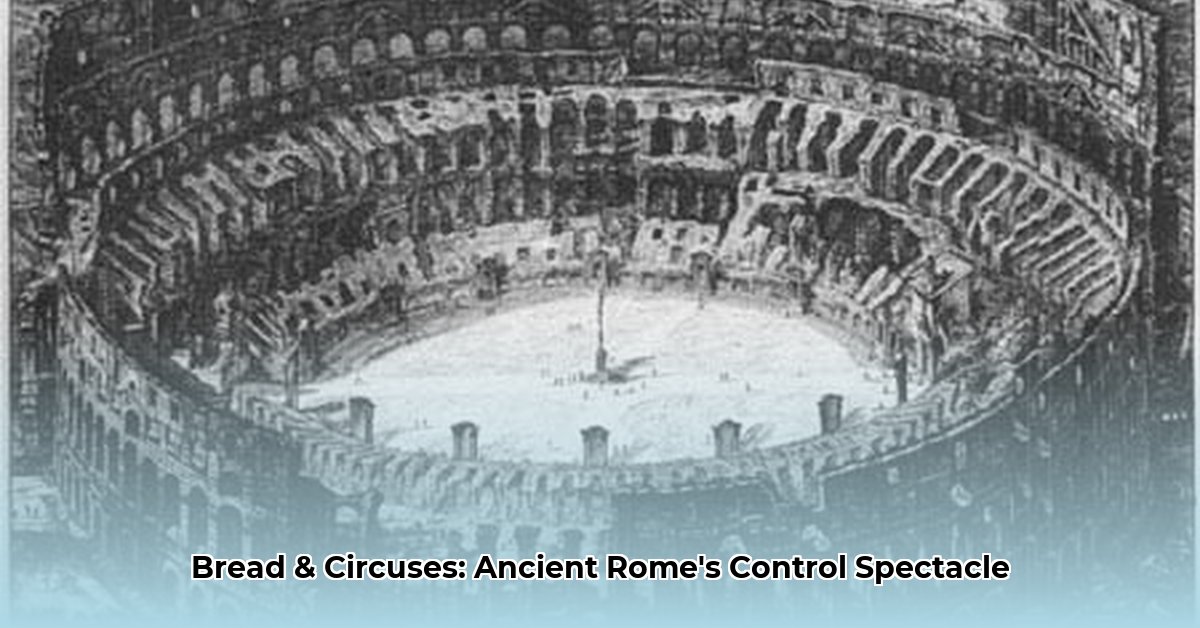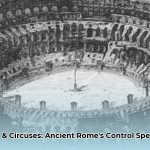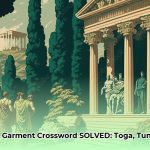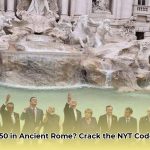The timeless phrase “bread and circuses” (Latin: panem et circenses), coined by the Roman poet Juvenal around 100 CE, refers to a political strategy of superficial appeasement. At its core, this concept posits that if a populace is kept adequately fed and entertained, they will remain content and compliant, largely disregarding deeper political issues. While seemingly a simple formula for social order, this ancient tactic raises profound questions: Does it truly function as a seamless, effective control mechanism in our complex contemporary world? And what are its inherent challenges and limitations? This article delves into the historical origins of “bread and circuses,” its intricate mechanisms, and its enduring manifestations in modern society. You can learn more about Roman entertainment.
The Roman Blueprint: Sustenance, Spectacle, and Social Engineering
In ancient Rome, the strategy of “bread and circuses” materialized through two primary pillars: the state-sponsored grain dole and magnificent public spectacles. Emperors understood acutely that a content populace was a stable populace, capable of deterring widespread unrest or rebellion.
The “bread” component originated from earlier Republican practices of grain distribution during food shortages, formalized as the annona system by the Imperial period. This sophisticated welfare program provided free or subsidized grain to hundreds of thousands of Roman citizens. Julius Caesar significantly reformed this system in 59 BCE, and Augustus later expanded and regularized the distributions, making it a cornerstone of imperial policy. For instance, an eligible male citizen might receive a monthly ration of five modii (approximately 33 kilograms) of unmilled wheat. While this provision was designed to prevent mass starvation, as it offered around 4,000 daily calories, it did not provide complete support and required additional resources for processing and preparation. The cost was substantial, reaching an estimated 72 million sesterces annually for Rome’s 200,000 recipients by Nero’s reign, about one-third of the military payroll. This massive state expenditure, however, remarkably prevented widespread famine for centuries—an unprecedented achievement in the ancient world. The grain dole, therefore, was not merely charity; it was a pragmatic tool for political stability, transforming potential weaknesses such as food scarcity into a mechanism of appeasement and control.
The “circuses” encompassed a vast array of public entertainment, particularly chariot races and gladiatorial contests, held in colossal arenas like the Circus Maximus and the Colosseum. The Circus Maximus, capable of accommodating up to 250,000 spectators, and the Colosseum, seating around 50,000, were not merely venues for diversion; they were powerful instruments of state propaganda. These ludi (public games), often religious festivals organized by the state or privately by ambitious politicians, showcased the state’s power, generosity, and control over exotic resources. From detailed chariot races around the spina in the Circus Maximus, with its seven large wooden “eggs” to count laps, to gladiatorial munera (contests) featuring specialized fighters like Samnites or Retiarii, these spectacles were meticulously designed to captivate and enthrall. Even figures like Cicero, while acknowledging the public’s enjoyment, expressed personal disdain for the extravagance, viewing such productions as a waste of time. Yet, the popularity was undeniable, and political figures like Caesar leveraged ostentatious games during their aedileship to gain public favor and advance their careers. This synergy of subsistence and spectacle fostered a culture of dependency and distraction, effectively converting an engaged citizenry into passive recipients of state-provided comfort and thrill.
The Enduring Echoes: From Ancient Arenas to Modern Diversions
The Roman model of “bread and circuses” was not an isolated historical anomaly; its underlying principles have recurred throughout history, adapting to various societal contexts. During Europe’s Middle Ages, monarchs hosted elaborate tournaments and grand feasts to divert attention from feudal inequalities and consolidate power. The 20th century witnessed this strategy take on industrial forms: the Soviet Union utilized state-controlled breadlines and propaganda films, while Nazi Germany combined welfare programs with mass rallies and controlled radio broadcasts, demonstrating a chilling blend of sustenance and spectacle.
Today, contemporary society mirrors ancient Rome by deploying analogous forms of “bread and circuses” to maintain mass contentment and compliance. The modern “bread” is delivered through readily available consumer goods, accessible credit, and various social welfare programs that aim to alleviate immediate economic discomfort. The “circuses,” meanwhile, have proliferated exponentially through pervasive digital media. The 24-hour news cycle, reality television, and the ceaseless, algorithm-curated stream of social media content provide an endless panoply of distractions. Major sporting events, celebrity scandals, and viral internet phenomena serve as modern equivalents to gladiatorial combats and chariot races, capturing collective attention and often overshadowing substantive political or socio-economic issues. This constant flood of information and entertainment, much like Rome’s ancient spectacles, can create a state of perpetual distraction, hindering citizens from deeply perceiving systemic problems or holding their leaders accountable.
The Fragile Facade: When Control Fails
While the “bread and circuses” strategy has historically proven effective, its success hinges on a delicate and precarious balance between fulfilling basic needs and delivering compelling entertainment. Economic downturns, supply chain disruptions, or widespread resource scarcities can swiftly disrupt this equilibrium, leading to public discontent and even unrest. History provides numerous examples where the absence of “bread”—such as widespread grain shortages in revolutionary France—has led to the unraveling of even deeply entrenched regimes.
Moreover, the advent of digital media and decentralized communication platforms has fundamentally reshaped the information landscape, introducing significant vulnerabilities to the strategy. Unlike the tightly controlled ancient arenas where information flow could be monopolized, modern platforms enable diverse narratives to emerge, challenging official versions of events and direct public attention. When individuals have access to a vast array of information, their capacity to critically assess political realities and identify underlying issues increases. This access potentially undermines governmental or corporate attempts to control public discourse, prompting citizens to question political motives and demand greater accountability. The effectiveness of “bread and circuses” in the digital age is thus debated, suggesting a complex relationship where different types of media can either foster or hinder critical thinking and civic participation.
Unmasking the Mechanisms: Power, Apathy, and Agency
The enduring appeal of “bread and circuses” lies in its exploitation of fundamental human desires for security and diversion. It operates as a form of social engineering, designed to manipulate public focus. This isn’t always overt manipulation; it can be a subtle interplay of consumerist culture, media sensationalism, and political rhetoric that collectively steers attention away from deeper, often uncomfortable, systemic problems.
The intentionality behind modern distractions varies from subtle deflection to direct suppression of critical dialogue. While welfare states genuinely aim to support citizens, their provisions can also serve to pacify dissent. Similarly, the media’s failure to rigorously scrutinize powerful entities—be they political figures or influential corporations—can inadvertently contribute to a reduction in accountability, fostering public apathy. The phenomenon of “slacktivism,” where superficial online engagement replaces meaningful civic action, also highlights how digital “circuses” can dilute genuine political participation. In societies with significant income disparity, the strategy might appear more effective in maintaining social order, as basic needs become paramount. However, increasingly well-informed and engaged citizens are more likely to resist such tactics, demanding substantive solutions over fleeting distractions.
Reclaiming Civic Engagement: Beyond Passive Consumption
Ultimately, society is not fated to be a passive recipient of “bread and circuses.” Citizens possess the agency to reclaim their attention and engage meaningfully with the world, moving beyond mere distraction toward systemic improvements. Recognizing the dynamics of power, distraction, and control is the first crucial step toward fostering a resilient and engaged populace.
Here is an actionable framework for citizens, policymakers, and media outlets to counteract the effects of manipulative distraction and redefine civic participation:
| Stakeholders | Immediate Focus (0-1 Year) | Strategic Goals (3-5 Years) |
|---|---|---|
| Citizens | Actively seek diverse, credible news sources; practice digital minimalism by limiting screen time on entertainment platforms; critically evaluate information for bias and depth. | Champion policies that ensure economic fairness, promote social mobility, and fund comprehensive civic education programs focused on governance, media literacy, and critical thinking. Demand accountability from elected officials. |
| Policymakers | Prioritize legislative agendas that address core societal issues (e.g., healthcare access, education quality, economic equity) rather than superficial, short-term solutions. Lead with radical transparency in governance and open communication channels with constituents. | Significantly invest in public education initiatives that cultivate analytical thinking, media comprehension, and historical understanding. Implement policies that dismantle systemic inequalities and address root causes of social unrest. |
| Media Outlets | Increase commitment to independent, investigative journalism that uncovers systemic issues; adhere to rigorous fact-checking and provide nuanced analysis over sensationalism. Prioritize in-depth coverage of political and economic complexities. | Develop robust strategies to combat misinformation and dis-information, perhaps through collaborative industry standards and public education campaigns. Innovate sustainable business models that do not rely on clickbait or sensational content. |
The “bread and circuses” strategy, while historically potent and perpetually adaptable, is neither a foolproof nor a sustainable solution in the long run. As societies evolve and information becomes more democratized, there remains a consistent possibility that people will eventually tire of distractions and demand more substantive engagement and genuine accountability from their leadership. Ultimately, the choice between short-term comfort and meaningful civic participation rests with an informed, critical, and actively engaged populace.










